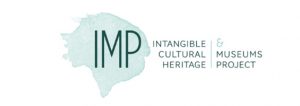 Since 2017 the Intangible Cultural Heritage and Museums Project (IMP) has been exploring the extent to which ICH practitioners and communities can work together with museum professionals and networks in ways that are sustainable and mutually beneficial, aimed at both safeguarding ICH and fulfilling traditional museum functions.
Since 2017 the Intangible Cultural Heritage and Museums Project (IMP) has been exploring the extent to which ICH practitioners and communities can work together with museum professionals and networks in ways that are sustainable and mutually beneficial, aimed at both safeguarding ICH and fulfilling traditional museum functions.
The ICH NGO Forum has been a supporting partner within the IMP project from the start, focusing on international policies for safeguarding ICH, and the implementation of the 2003 UNESCO Convention.
The IMP project arose from the finding that the intersections of ICH and museums are often fraught with questions and challenges. For instance, the concept of ICH raises many different interpretations. Discussions about its integration into museum settings are often dependent upon the approach of ICH. Oral history and narrative interviews with practitioners, for example, are sometimes used within museums as a means to provide background information to objects or practices displayed. While museum professionals commonly regard such narrative media as intangible heritage in itself, ICH professionals point out that they fulfill a more mediating role: interviews and oral history offer documentation and information transmission, but do not constitute a “living” ICH practice in itself. Another field of tension relates to audience and practitioner engagement when ICH is integrated into museum contexts. Participatory museology currently still features only at the margins of contemporary museum practices, and is not yet a key element in the educational trajectories of museum staff. Nonetheless, the potential for successfully bridging ICH and museums cannot be underestimated, and requires increased attention as to its place in 21st century museums.
In order to address these questions and many other debates, the IMP project has been building a forum for encounters and exchanges of experiences and best practices, both from the side of ICH practitioners and communities, and of museum networks and professionals. The key to success lies in cooperatively refining and developing multiple perspectives, conceptual frameworks, and methodologies with a view to serve practices on museums and collections as much as they can foster the safeguarding of ICH. The IMP project has a strong international orientation through its collaboration between the five partner countries of Belgium (Werkplaats mmaterieel Erfgoed), the Netherlands (Kenniscentrum Immaterieel Erfgoed Nederland), Italy (SIMBDEA), France (Centre Français du Patrimoine Culturel Immatériel), and Switzerland (Verband der Museen der Schweiz / Bundesamt für Kultur). It is additionally embedded in transnational networks such as ICH NGO Forum, ICOM and NEMO – Network of European Museum Organisations. This structure actively encourages transational mobility in order to achieve the goals of the project, including interdisciplinary peer learning, developing professional skills and tools, and creating cross-border networking opportunities. The international orientation of the IMP is part of a broader set of strategic directives, which also include goals such as raising awareness on the topic of ICH and museums among both museum and heritage professionals, and the development of innovative participatory safeguarding measures for ICH. This approach enables the exchange of good practices between museum and heritage professionals within Europe, but the IMP project members and collaborators are also ready to start sharing their collectively gained knowledge and experiences on a global scale.
In 2020, the IMP project will come to its conclusion. To summarize all expertise gained and best practices mapped, a concluding symposium will take place in Brussels on 26 February 2020. The meeting will bring together heritage practitioners, museum professionals, policy makers, academic researchers, and representatives of NGO’s. In different formats such as a roundtable discussion, a keynote speech, parallel working sessions and videographic intermezzo’s, the participants will summarize the theoretical and practical insights that have been pooled together over the past three years, while at the same time valorizing them into best practices for museum and heritage professionals, and recommendations for policy makers in a comparative European context. The Concluding Symposium also provides an excellent opportunity to highlight the many different practical contributions that were made by ICH and museum representatives over the course of the IMP project, as well as the project’s outreach initiatives, aimed at different target audiences. Among the latter are the upcoming IMP toolbox, which will be an open access repository of inspiration and methodology for both heritage and museum professionals. The meeting will also feature the IMP book, which comprises a more extensive reflection of lessons learned and opportunities to follow. IMP welcomes all of you with an interest in the subject of ICH and Museums to join the Symposium in Brussels on February 26 to come and share the outcomes, co-creations and cross-disciplinary, international collaborations initiated by the project.
The Intangible Cultural Heritage and Museums Project was made possible with the support of the Creative Europe Programme of the European Union, the Flemish Government and the Swiss Federal Office of Culture.


Hello dear colleagues!
Our non-governmental organization is called the Public Association “Kuhhoi Pomir.” Public Association “Kuhhoi Pomir” is the only organization in Tajikistan accredited by UNESCO (in 2018). Over the past three years, the organization’s specialists have been participating in UNESCO Sessions on the Intangible Cultural Heritage (France, Mauritius, Colombia) annually.
The organization has carried out a number of projects aimed at reviving traditional culture, protecting the ancient Pamir languages, the cultural situation of the Pamir peoples, identifying and enhancing the spirituality of the environment, habitat, preserving bioculture, ethnic culture, ecoculture and local biodiversity, studying the philosophy of life of the Pamir highlanders. In the framework of the initiative “Man, Culture, Nature” in different parts of the Pamirs, she implemented her ideas through the conduct of many seminars, conferences, festivals, round tables, research and surveys, information, analytical, and consulting services.
We are interested in the creation and institutional strengthening of interactive public museums in remote mountainous areas of the Gorno-Badakhshan Autonomous Region of the Republic of Tajikistan (hereinafter GBAO or Pamir), and specifically in the Bartang and Khuf gorges of this region.
The gorges of Bartang and Khuf, not only in GBAO, but throughout the Republic of Tajikistan are famous for their beauty, primordiality, uniqueness, and originality. According to the global ranking of greendestinations, the Bartang Valley was included in the list of Sustainable Destinations Global Top 100 and the region is recognized as one of the most sustainable destinations for eco-tourism on Earth. When included in this list, criteria such as nature, environment, culture and tradition, and eco-tourism strategy were taken into account. The Bartang Valley, 100 km long, is connected with the alpine lake Sarez and the eastern Pamir. Most of the valley is located on the territory of the Tajik National Park, which is included in the UNESCO World Heritage List.
The Bartang and Khuf valleys with many unique natural, cultural, historical, archaeological and ethnographic sights are distinguished by the grandeur of wildlife and beautiful landscapes (memorable valleys and gorges, mountains and alpine lakes), a healthy environment (air and water quality), rich in history and cultural heritage (including sacred places, local identity and traditions) and, first of all, the unique hospitality of the people living here.
In Bartang and Khuf, the identity of the population is well preserved: their music, dialect, and life are very attractive. The Khuf Valley is famous for its mystery, mystery. Since the end of the 19th century, this valley has attracted the attention of foreign travelers. About the life and life of its population, even then the book “Tajiks of the Khuf Valley” was written by the famous ethnographer with the world name Andreev.
Interesting creative people-enthusiasts live and create in such villages. Two personalities: Chonboz Dushanbiev (Bartang) and Shokhinbek Komilbekov (Khuf) collected and exhibited in their homes collections of genuine objects – witnesses of social and natural history. In addition to the fact that these people are simultaneously experts in local culture and life, musicians, singers, artisans, healers, respected people, each of them collected about 250 exhibits of ancient things and utensils of historical and cultural value in their homes. Thus, they introduced historical values into the cultural circulation of society. These people revive the process of cultural continuity, organize a cultural dialogue – between the past and the present, between the main values and the modern worldview. Over the past years, our organization has been closely cooperating with the communities of these regions in the direction of preserving tangible and intangible cultural heritage. Using their collections, Dushanbiev and Komilbekov regularly hold free exhibitions, shows and presentations for schoolchildren, tourists, official guests, thereby playing an important role in creating, protecting, preserving and restoring tangible and intangible cultural heritage, enriching cultural diversity and promoting the creativity of young generations.
However, due to their remoteness and lack of access to information, lack of economic conditions, lack of local philanthropists, poor socio-economic situation in the region, these people are not able to further advance their idea of the constant use of collected exhibits.
There is also the danger of loss of collected items of museum significance, the lack of professionalism of collectors in storing the collection, the method of storing the collections, economic instability, the departure of initiators and enthusiasts from life, the lack of a decent permanent place to save the collected exhibits, regular dragging of exhibits from place to place, reducing the number of carriers traditional culture, global transformation in the world, the emergence of new conditions for the development of tourism and crafts in Tajikistan lead to the thought of doing a different approach to using this collection.
Another factor that led us to this idea is that today the Bartang and Khuf gorges in GBAO are one of the most visited places by tourists. However, according to our analysis, visitors, besides natural monuments and beauties along the way, are not able to simultaneously get acquainted with the history, way of life, and customs of the Bartangians and Khufts.
Our consultation: How your project can help us (advisory, technical and other types of consultations) in the creation, strengthening of data from public, interactive historical, everyday, ethnographic folk museums with local history, history, art profile engaged in the storage, use, popularization, acquisition, and exhibiting monuments of material, spiritual and traditional culture in the habitat of people living in remote regions. These museums will be permanent organizations accessible to the general public, which will promote the study of history, education, culture and nature of the region, biographies of fellow countrymen, individual historical events, contribute to the development of society and satisfy its spiritual needs.
IMP program in the safeguarding of ICH seem to be most effective. Working on this theme I have sound proposal of establishing with new concept a Museum of Traditional Physical Culture, Sports and Games in India. Mr. Ravi M Sahu -repreentative of accredited NGO H. V. P. Mandal Amravati INDIA attending ensuing summit scheduled at Bogota Columbia will share this proposal during the Session, if opportunity is given to him.